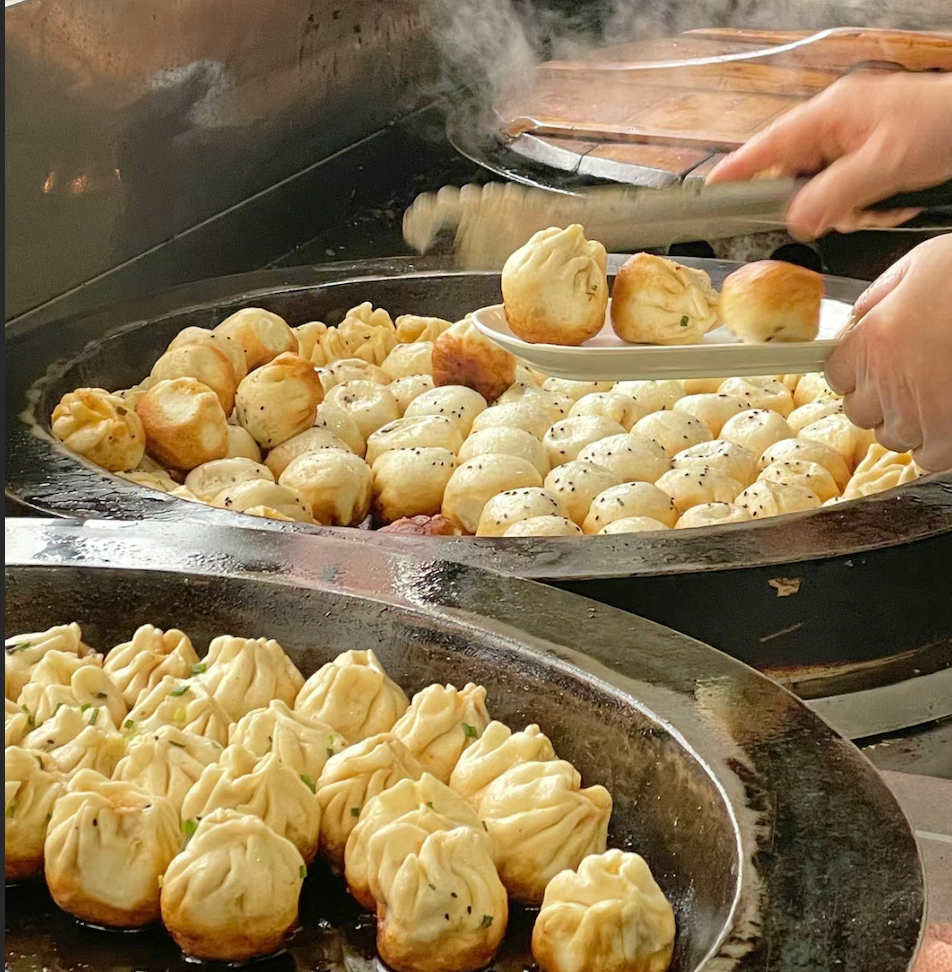A City Walk Through Time, Art, and Alleys
- Ally Han
- Feb 14, 2024
- 3 min read
"Shanghai is a city you visit and want to go back to."
"Why?"
"Because you start to see the other side of the city beyond its prosperity and convenience."

Join me on a city walk through Shanghai, a city where the past is not overshadowed by the skyscrapers but is instead woven into modern life. The essence of Shanghai is not captured solely in its modernized towers but in the seamless blend of Eastern tradition and Western influence. Walking down the streets in the morning, you will see locals buying baozi or shengjian from street vendors, setting up a typical scene for the day. On the street, traditional Chinese breakfast stores are served side by side with cafe shops and bakeries offering bagels and croissants. This culinary fusion unites diverse food cultures together in Shanghai's distinctively commercialized neighborhoods.

Skipping over the city's creativity, as shown by locations such as M50, would make our journey unfulfilling. M50, or 50 Moganshan Road Creative Park was formerly an industrial textile mill that was transformed into an artistic community. Shanghai's approach to urban renewal is through conversion of abandoned sites or buildings into brand-new compelling landmarks. And M50, known by its graffiti-adorned walls and artistic galleries, is always one of my favorite places for photo booths and arts exhibitions. It also stands as a demonstration to Shanghai's being an international center for street art and creative industries.
"Nong tang" is a unique feature of Shanghai's neighborhoods, typified by Shikumen style buildings, which provide a special perspective on the city. Thousands of Shikumen buildings and "nong tang" have been created by their residents with its own distinctive features, and they are also the main residence area for older populations in Shanghai. Hidden away from the main streets of the city downtown and away from the bustling night scene of the modern city, “nong tang” due to its population group characteristics shows a slow pace of lifestyle. Here, you will find elderly residents chatting in Shanghai dialects, accompanied by the buzzing sound of old radios. You will also see lots of clothes drying in the narrow alleyways, and people riding bicycles to and from school or work.

We then traveled via Shanghai's convenient subway to Xintiandi, a commercial and popular shopping area that epitomizes the integration of old architecture with modernized lifestyle in Shanghai. The Shikumen buildings were originally old residential neighborhoods and have been carefully preserved and transformed into a commercial district filled with fashion make-ups and cloth stores, cafes and restaurants popular with young people. Shanghai's goal for urban planning, which includes creating pedestrian-friendly areas with a focus on sustainability and reusing old buildings as new landmarks, is well reflected in the design of Xintiandi. Many former residential or abandoned areas have been redeveloped in recent years into commercial centers like Xintiandi, in keeping with Shanghai's vision to create a "15-minute community living circle" that meets the local residents' housing, social, and transportation needs all within walking distance. Following the restoration, fashionable stores now line the once-Shikimen doorways of residences. Additionally, I used to spend most of my weekly activities at commercial centers like Xintiandi, exploring the new restaurants, dessert, or coffee shops. The outdoor cafés and bars are the ideal places for family and friends to get together on the weekends to enjoy everything from traditional Shanghainese cuisine to international favorites as well.
In the evening, we arrive at the Bund, where the modern tower are in stark contrast to the "nong tang" of just a few hours ago. The Bund, Shanghai's most famous tourist attraction and strolling point, offers a dazzling view of the Pudong skyline against the backdrop of the Huangpu River, with its skyscrapers and the neoclassical colonial buildings.
Shanghai is a unique and interesting city that lies in its complexity and inclusiveness. Every alley (also known as "nong tang") tells a different story; every skyscraper encapsulates a dream; and every space, from the modern art galleries to the historical Shikumen residents collectively molds the multifaceted character of Shanghai.


Comments